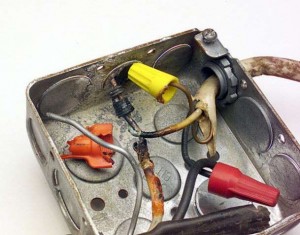 Loose electrical connections cause multiple problems in appliances, heat being the most common one. We’ve all seen burnt wire nuts in a dishwasher power junction box or on a dryer heating element. But how does a loose connection produce heat?
Loose electrical connections cause multiple problems in appliances, heat being the most common one. We’ve all seen burnt wire nuts in a dishwasher power junction box or on a dryer heating element. But how does a loose connection produce heat?
Electrical connections need to be mechanically tight to ensure that the resistance across that connection is as low as possible, ideally 0 ohms. When a connection becomes either loose or corroded, it develops resistance. This resistance dissipates power in the form of heat when current flows through it. Even a resistance as low as 5 ohms can produce more than enough heat to burn up the connection and surrounding wires.
In this little video, I show you the effects of a loose connection in a circuit and we’ll see how much heat, in watts, a typical loose connection produces. I’m also going to dispel a common myth that I hear, even from manufacturers: loose connections cause a circuit to draw more current. This is completely false and I’ll prove it to you.

 – Upcoming webinar on Schematic-foo: ancient Samurai art using tech sheets as deadly weapons in appliance repair.
– Upcoming webinar on Schematic-foo: ancient Samurai art using tech sheets as deadly weapons in appliance repair.